[ad_1]
World-class muck diving, a shipwreck sunk for the last 60 years just steps off the beach, gorgeous kaleidoscopic coral walls: there’s so much variety when it comes to scuba diving in Tulamben, Bali!
Just 30 minutes by car from another epic dive epicenter, Amed, Tulamben is a rising star in macro underwater photography, about equal to the likes of Sulawesi’s Lembeh Strait and Anilao in the Philippines.
Tulamben is home to the USAT Liberty Wreck dive (often just known as the “Bali wreck dive” since it’s the most iconic, even though there are several wreck dives in Bali) but it’s worth sticking around the area to see even more.
Whether you want coral gardens, shipwrecks, or scavenger-hunt style diving in the ‘muck’ in hopes of seeing Bali’s most unique nudibranchs and other mini sea critters, Tulamben diving can likely give you just what you want.
The great thing about diving in Tulamben is that being so close to Amed, you can base yourself in either place, as virtually all Amed dive shops will bring you to Tulamben for the day.
I personally didn’t stay in Tulamben this time, but rather spent two weeks in Amed, since I currently live and travel full-time as a digital nomad and staying in one spot for as long as possible is essential for my work habits and sanity.
That said, I did several dives in Tulamben, so while I don’t know much about the village itself or what there is to do there besides dive (unlike Amed, which I’ve visited twice and know quite well), I do know the dive scene fairly well!
Getting to Tulamben
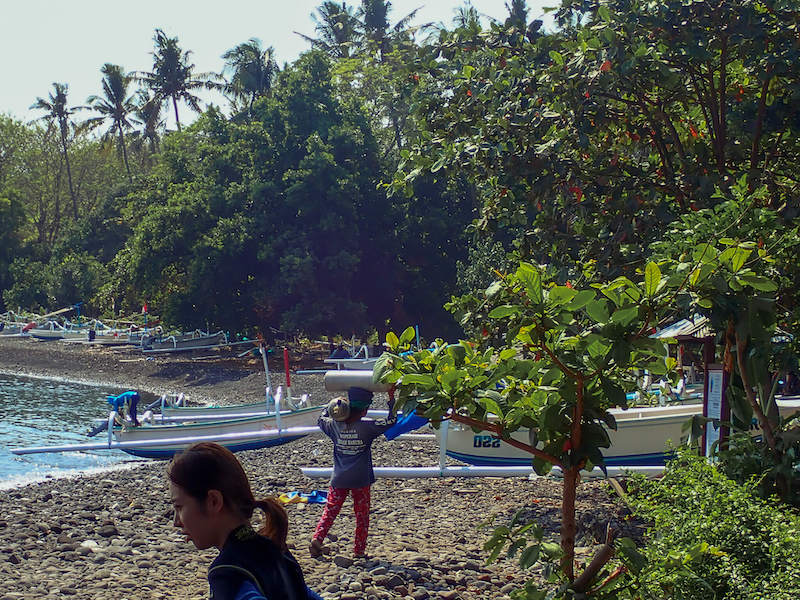
It’s really easy to get to Tulamben from Bali’s international airport, Ngurah Rai.
While Tulamben isn’t close per se, transportation is really affordable, even private cars.
I paid 700K IDR ($44 USD as of November 2023) for a private transfer from my hotel to Amed, not far away.
I imagine that Tulamben would be priced similarly, if not only 100K IDR more or so ($6 USD)
Since I arrived late at night, I stayed the night in the Novotel airport hotel and then had my driver pick me up the next day — I recommend the same if your flight arrives late.
The drive is about 3.5 hours, so you’ll be there in no time!
You could rent a scooter, but I don’t recommend it, at least not with bringing all your luggage with you (especially if you have dive gear)
If you really want to rent a scooter for your time in Bali, just rent one locally when you arrive in Tulamben.
Best Time for Diving in Tulamben
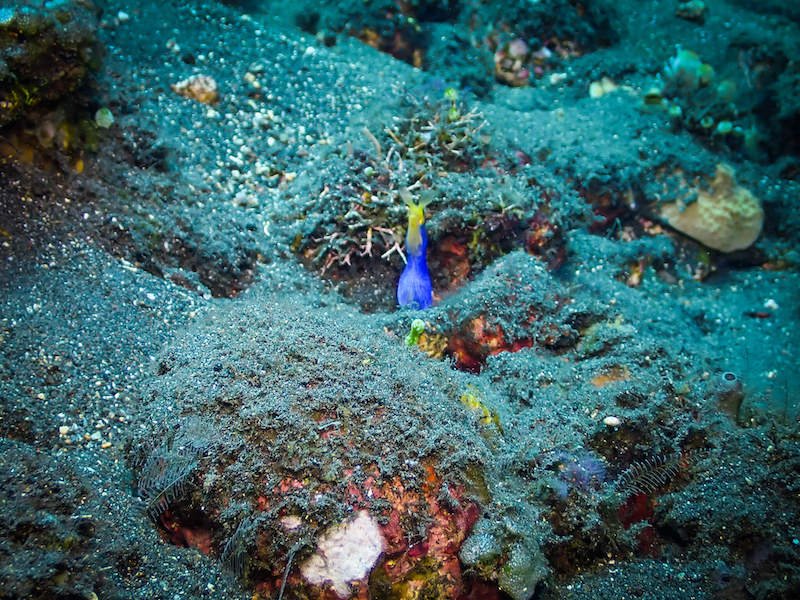
Diving in Tulamben is a pleasure year-round!
Technically, the best time of year is in Bali’s dry season, which runs from May through October. November through April is technically rainy season.
That said — I’ve been diving in Bali since the beginning of November (and now it’s November 12th) and I haven’t seen a drop of rain since I arrived!
Bali is sort of in the sweet spot when it comes to tropical dive destinations, since it rarely gets really strong cyclones or typhoons the way other Southeast Asia and Oceania dive destinations do.
That means that diving in the rainy season is generally usually totally possible, though visibility may suffer a tiny bit sometimes when the rains are strong.
But even in the rainy season, water temperatures around Tulamben are always nice and balmy!
Since I’ve been diving in Tulamben, my dive computer has said that the surface water temperature is about 31° C (88° F), with underwater temperatures around 29° C (84° F).
These temperatures are quite normal for diving in Tulamben, typically hovering around 28-29° C, so this is pretty typical for the area.
Occasionally, during the rainy season, the viz can drop a bit, but typically only in very bad weather conditions.
Best Dive Shops in Tulamben

Personally, I did my dives in Tulamben with an Amed dive shop that drove us there. I did all my Tulamben dives with Amed White Sand Divers and I recommend them highly!
If I were to go to Tulamben independently for diving, I would opt to go with Dive Concepts Tulamben, who also run dive shops in Amed, Pemuteran, and Nusa Lembongan.
Dive prices in Tulamben are really affordable. You can buy a 7-pack of dives from Dive Concepts for 2.1 million IDR, about $134 USD or less than $20 per dive!
Favorite Dive Sites in Tulamben
USAT Liberty Wreck
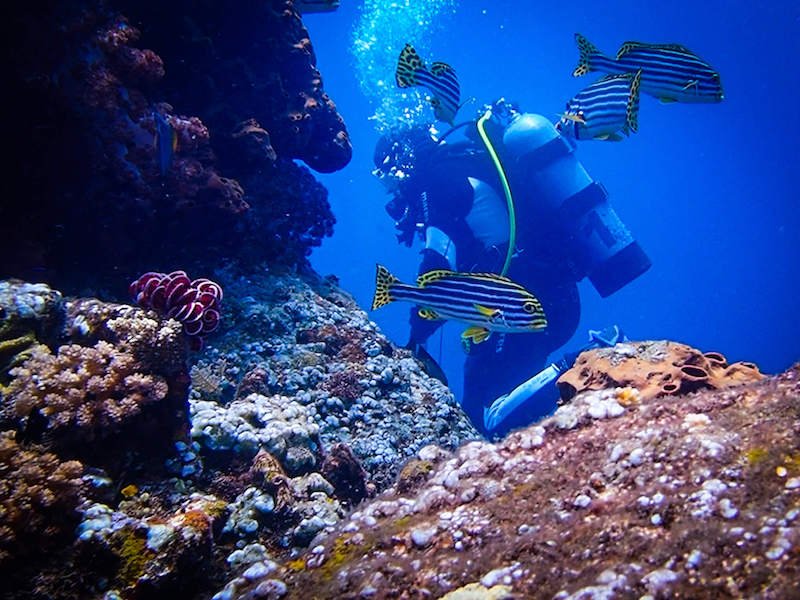
Dive Type: Shore dive to a wreck dive, with coral and muck diving before you reach the wreck
Dive Level: Beginner-friendly (no wreck diving certification needed)
Dive Profile: Maximum depth 24 meters, average depth 12 meters, dive time 55 minutes
Dive Sightings: Orangutan crab, regal angelfish, oriental sweetlips, dogface pufferfish, coral rabbitfish, Hypselodoris zephyra nudi, Samla bicolor nudi, Hypselodoris tryoni nudi, Goniobranchus hintuanensis nudi, clown anemonefish with fluorescent green bubble tip anemone.

Far and away the most famous dive site in Tulamben, the USAT Liberty Wreck dive is one of the most popular dives in Bali, period.
Depending what season you visit, it can be swarmed with people, so make sure to go with a dive shop that ensures smaller groups.
I am traveling solo, so I was lucky to be paired 1:1 with a divemaster at Amed White Sand Divers my entire time! This way, it made it hard to get ‘lost’ in a sea of other divers.

Dive Concepts has a maximum group size of 4 divers per divemaster, which is also a pretty good ratio.
Personally, I didn’t mind there being other divers as all it did was emphasize the huge scale of the USAT Liberty.
At 400 feet long, it’s pretty huge and you can easily create some space between you and another group of divers.
That said, I wouldn’t have loved to be part of a larger group of divers.
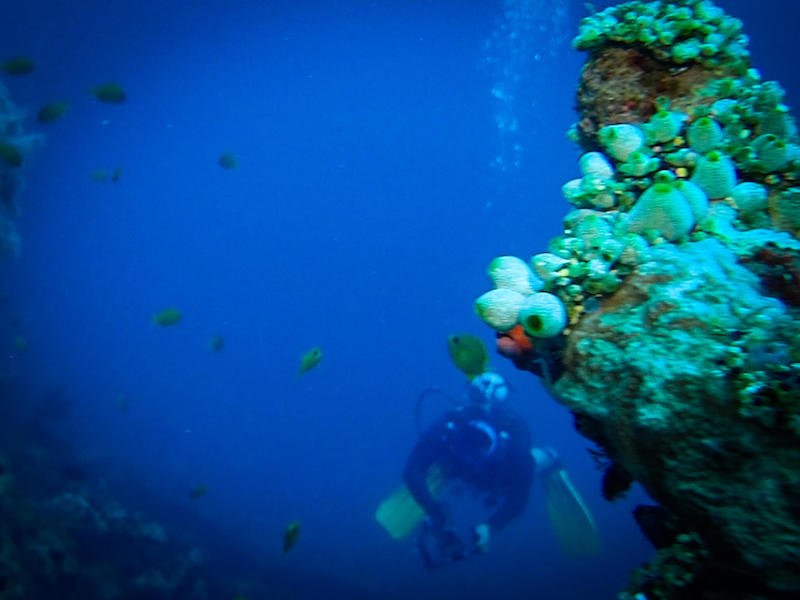
I loved this dive from the moment I descended — immediately, we were treated to nudibranch paradise, with with my guide’s expert eye, I immediately started photographing.
Even though the wreck it just a few meters from shore, it took me nearly 10 minutes to get there because I was enjoying all the nudibranchs I was seeing on the sandy shore in the meantime!

Once we reached the wreck, the dive site just did not stop delivering. It was so epic!
The USAT Liberty has sat in the ocean since the 1963 eruption of Mount Agung, which knocked it from shore into the ocean.
In those 60 years, the metal of the ship has been almost entirely coated by hard and soft corals in every color of the rainbow, being reclaimed by the ocean into something completely unique.
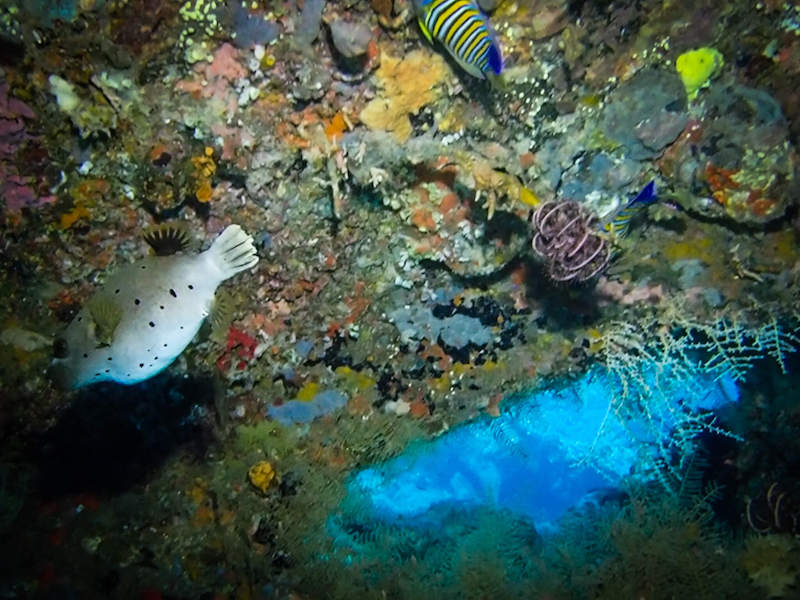
In between all the cool sights of the wreck itself, there are still little microscopic moments to savor.
My dive guide spotted a belligerent little orangutan crab hanging out on bubble coral — its favorite haunt, but it also likes hanging out in anemone.
He also spotted one of my favorite nudibranchs, the Tambja morosa (gloomy nudibranch).
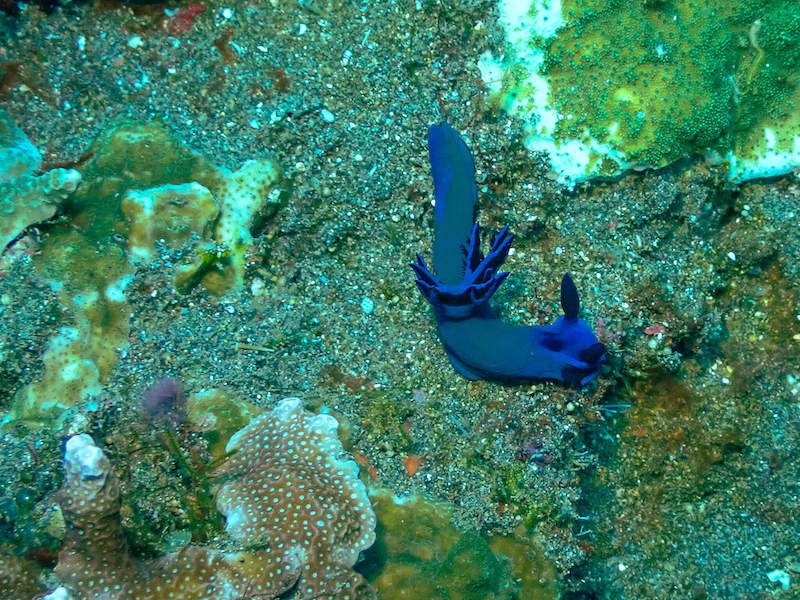
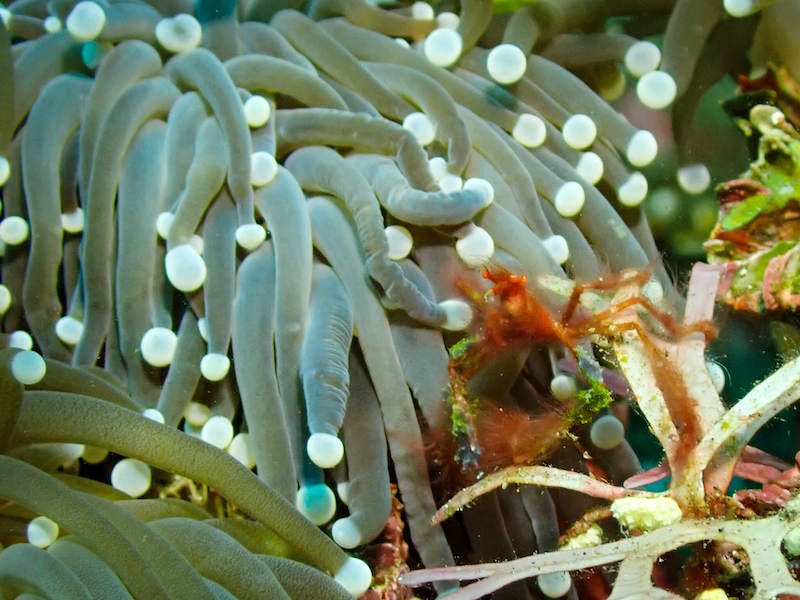
After spending some time a little bit deeper looking at these adorable critters and fiddling around with my macro settings, our NDLs were approaching.
So we ascended a bit and then continued through the wreck, going through a large rupture in the USAT Liberty where you could cut through to the other side of the wreck.
Here, we spotted one of my favorite sights of that dive: a clownfish in neon green bubbletip anemone — the colors were insane.

After that, we stayed in the shallow portion of the wreck, which was one of the most beautiful safety stops I could imagine.
I liked watching some of the larger fish like the oriental sweetlips sheltering under the bow of the ship, which was covered in soft corals.
It was the perfect end to a perfect dive!
Coral Gardens (from USAT Liberty shore entry)
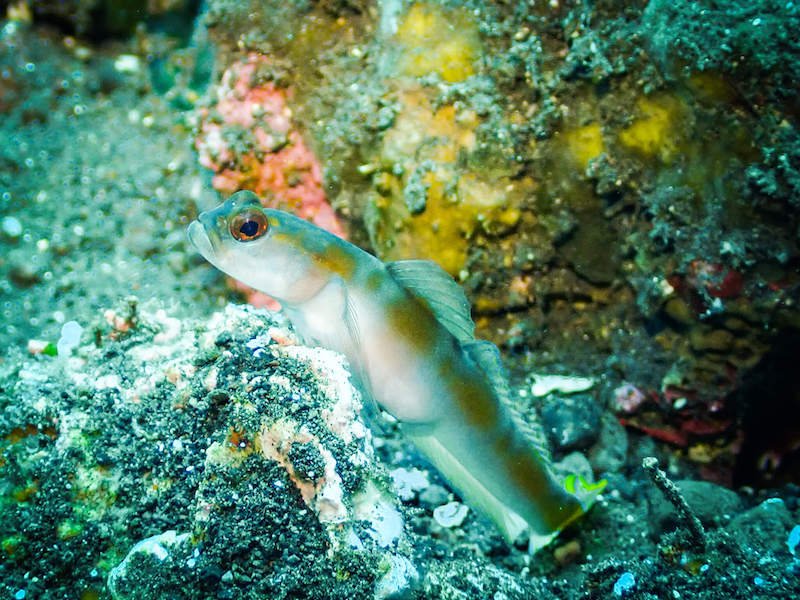
Dive Type: Shore dive, sandy slope with coral
Dive Level: Beginner
Dive Profile: Maximum depth 20 meters, average depth 12 meters, dive time 65 minutes
Dive Sightings: Large octopus with cleaner shrimp, baby octopus hiding in a rock pile, giant barracudas, flagtail shrimp goby, Mexichromus trilineata nudibranch, Goniobranchus kuniei “Marilyn” nudibranch, leopard flounder
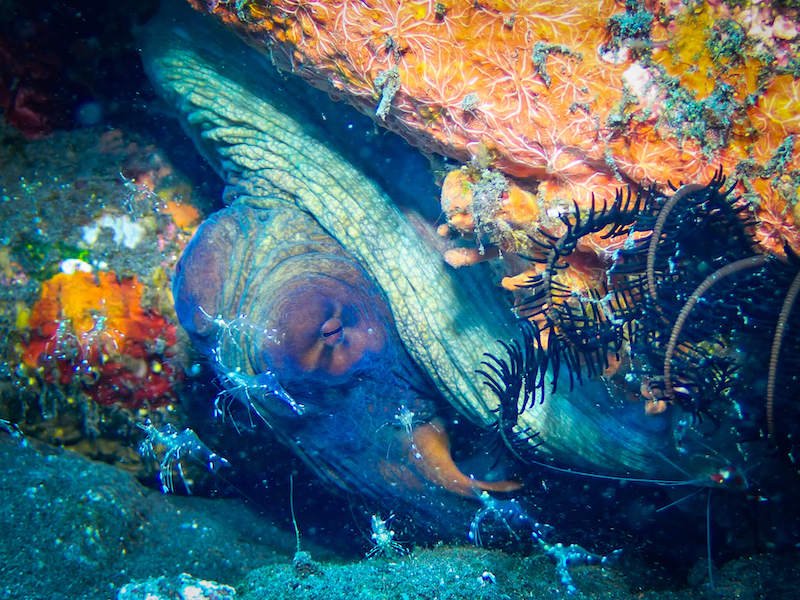
This is part one of a large dive site; I am listing them separately because I explored entirely different sections of the site on each dive, and left from different entry points.
This part of the dive was a mix of muck diving and coral diving, and we dove from the entry point for the USAT Liberty.
Along the way there was so much beautiful soft coral!
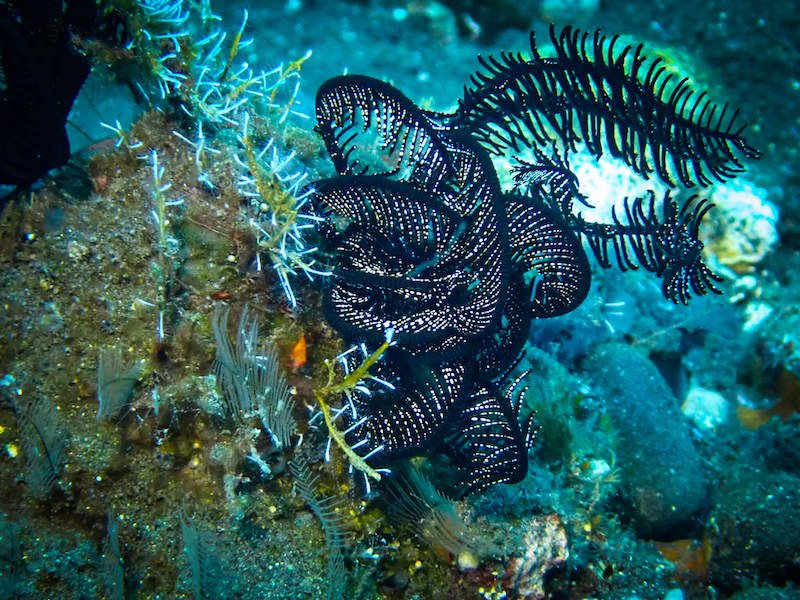
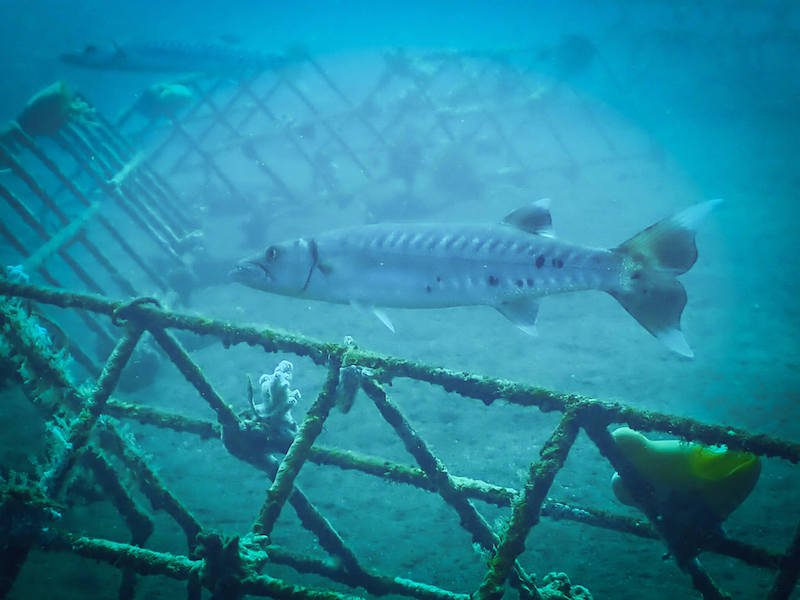
We saw some of the artificial reefs (and some giant barracudas hanging out there!), but we didn’t get as far as the sunken statues.
I’ll talk about those in the next section, as those are closer to the Tulamben Drop Off part of the dive site.
Mostly, though, this dive was an excellent dive for a mix between some beautiful coral to admire and so many nudibranchs and small life to photograph.
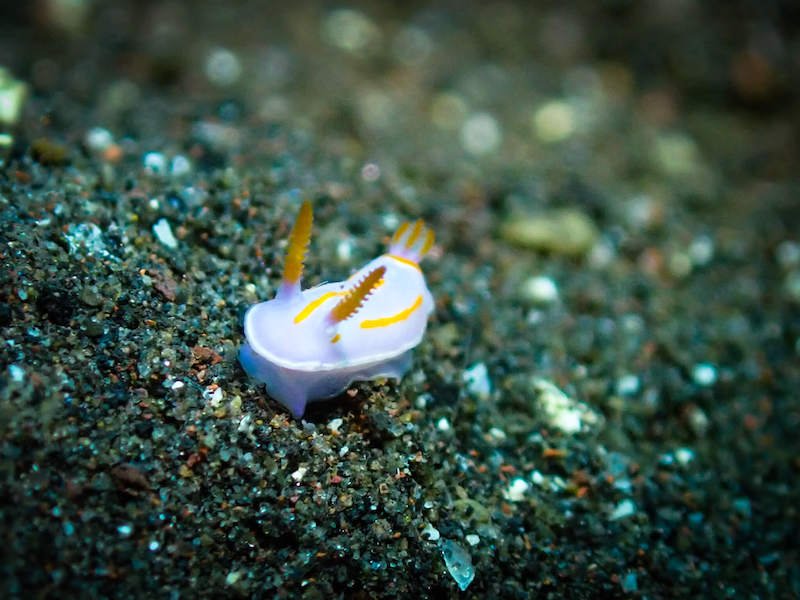
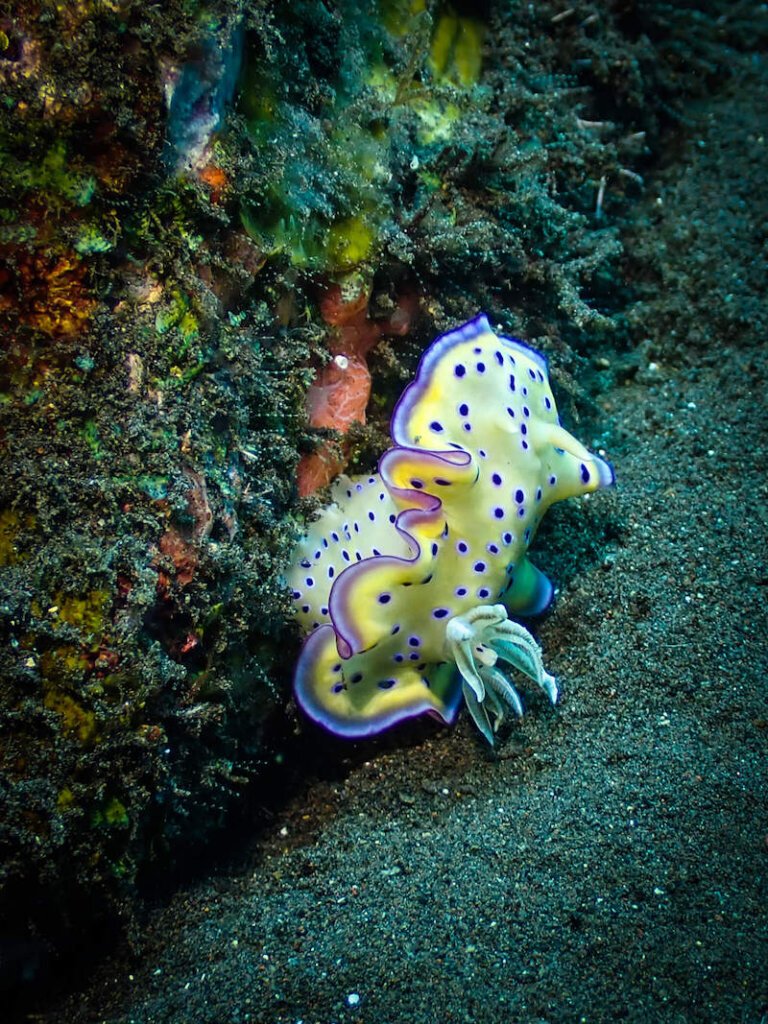
Between the sandy bites and the coral parts, there was just so much to see here.
And another favorite, the ribbon eel, with its unique yellow and royal blue coloration.

Actually, I saw two ribbon eels, sharing the same burrow — something I didn’t know that they did, but apparently they do.
Ribbons eels are a never-ending mystery to me!
It was a fun place to work on some of my photography skills because the dive conditions were really easy to work with as well.
I really enjoyed playing with the composition of some shots, like this close-up of a camouflaging flounder’s eyes.
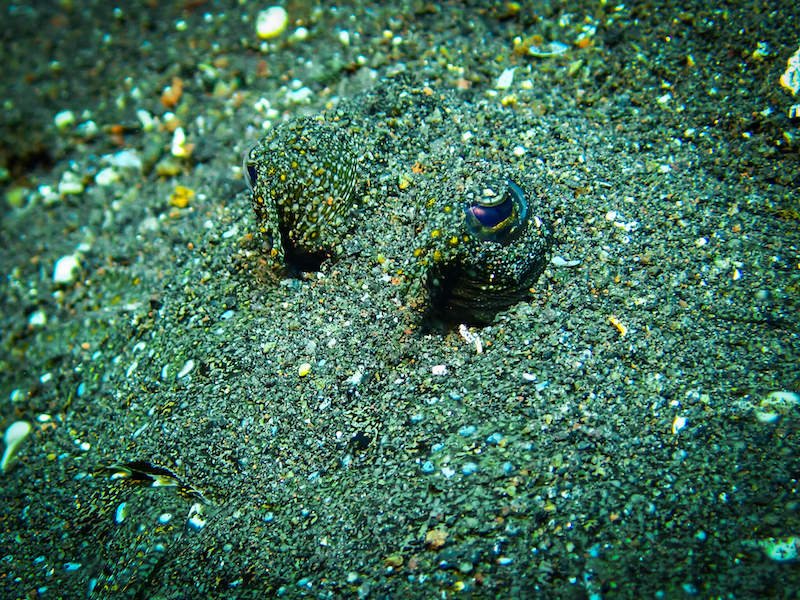
Overall, this dive stunned me a lot, and it was definitely worth doing in conjunction with the USAT Liberty.
It was also a lot less crowded here, as most people do two dives at the USAT Liberty, but we split our 2-tank dive between the wreck and the Coral Garden dive site.
Coral Gardens (from Tulamben Drop Off shore entry)

Dive Type: Shore dive with coral and sandy slope, sunken statues underwater
Dive Level: Beginner
Dive Profile: Maximum depth 20 meters, average depth 12 meters, dive time 62 minutes
Dive Sightings: Bubble coral shrimp, orangutan crab, ribbon eel, Goniobranchus fidelis nudibranch, Hypselodoris paradisa nudibranch, Hypselodoris zephyra nudibranch, Hypselodoris tryoni nudibranch, Doriprismatica atromarginata “Cheesecake” nudibranch, Papuan toby
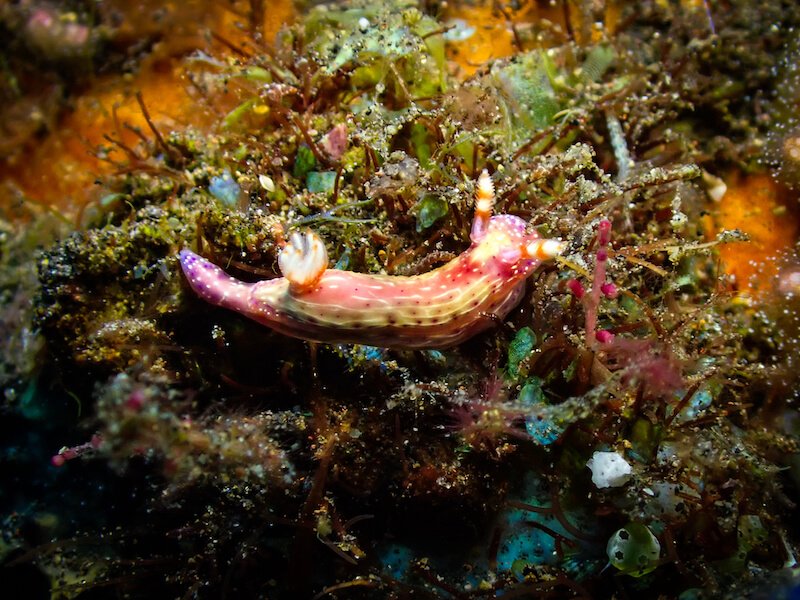
Even though this is technically the same dive site as the one above, I saw so many unique and different things.
It actually felt like a whole new dive site because we didn’t cover any of the same ground.
This section of Coral Gardens has the submerged Buddha statues which are a fun photography spot — great if you want a unique diving picture of yourself!
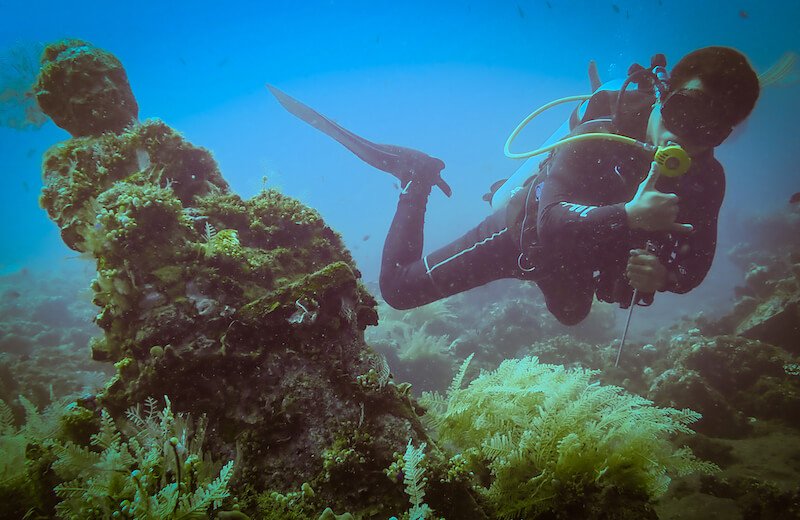
On this dive, we saw so many unique nudibranchs, including many new-to-me species.
Some of those include the Goniobranchus fidelis, the Hypselodoris paradisa, and the Doriprismatica atromarginata, all first-time sightings for me.

We also saw one of my favorite fish of all time, the Papuan toby (I love all tobies, but this one in particular has beautiful markings!).
We also got really lucky in one section where we saw bubble coral and some of the unique animals around it.
Namely, the orangutan crab and the bubble coral shrimp, which is such a funky little guy!
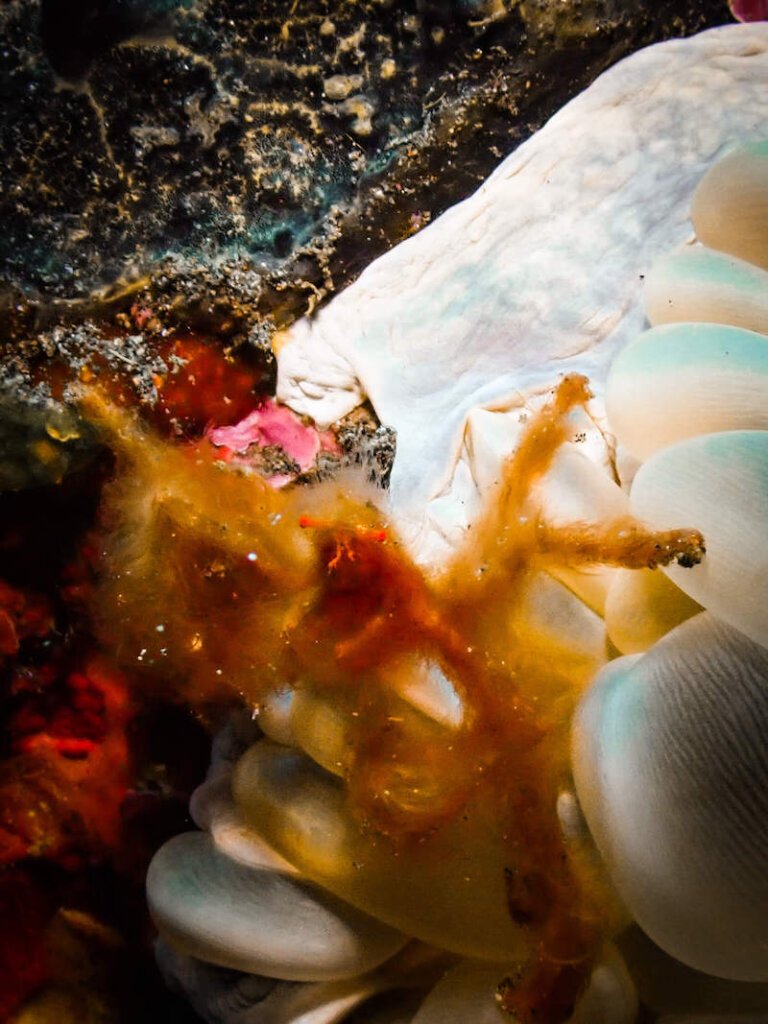
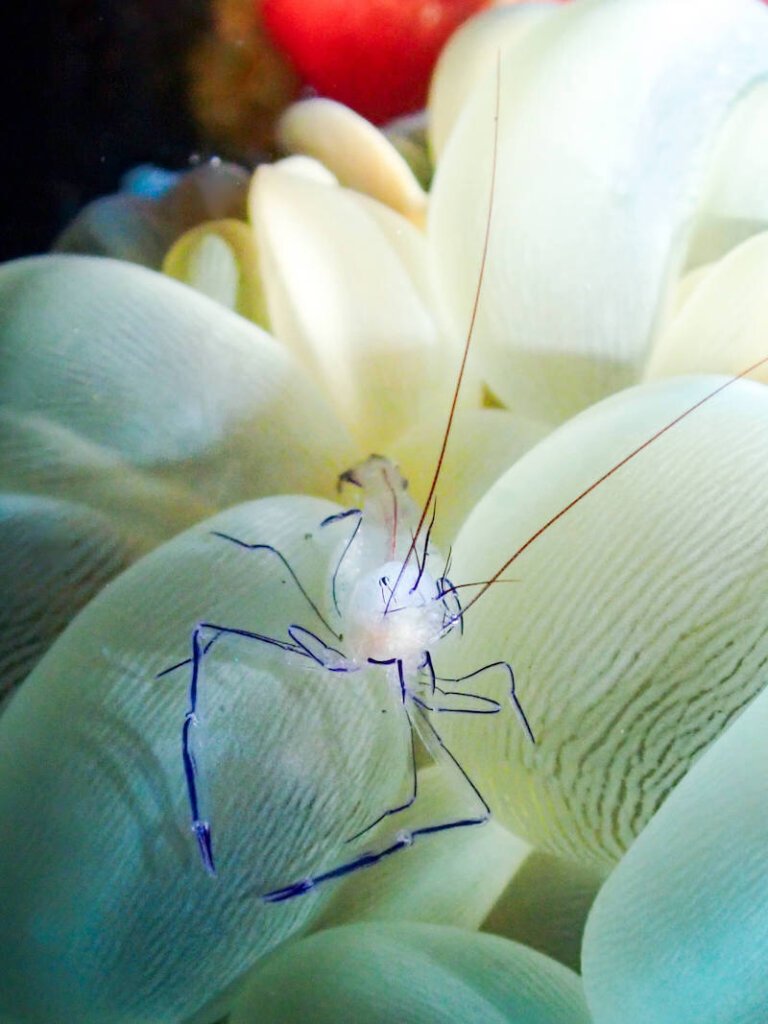
Overall, I was really happy to do this section of the dive site, and barely even feel like it was the same site.
I’d definitely recommend exploring this as a second dive after the Tulamben drop-off (which is next on this list), because you can reach it right from shore — just dive towards the left, rather than the right (the way you go to reach the wall).
Tulamben Drop Off
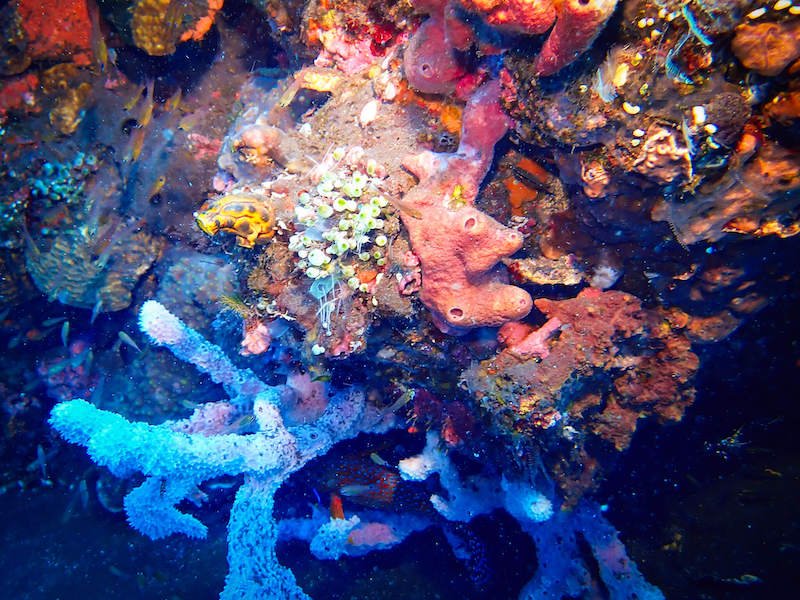
Dive Type: Shore dive to a wall dive
Dive Level: Intermediate (Advanced Open Water recommended due to depth possible)
Dive Profile: Maximum depth 24 meters, average depth 14 meters, dive time 58 minutes
Dive Sightings: Peacock-tail anemone shrimp, golden-striped soapfish, juvenile harlequin sweetlips, coral-banded shrimp, skunk cleaner fish on yellow soft coral, harlequin pipefish, pink skunk anemonefish, purple iridescent magnificent sea anemone
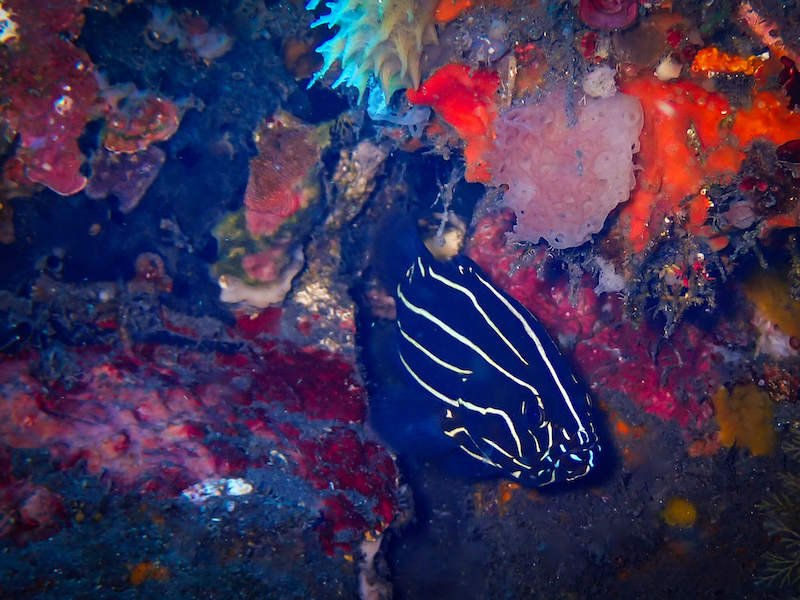
If there’s one word for this dive site… it’s just wow!
This is one of the most impressive dive sites in Tulamben because it really has it all (well, besides a wreck, but no dive site can have everything, can it?)
This dive site had an absolutely stunning coral wall – I couldn’t believe my eyes at how colorful and spectacular it was, with so much hard and soft corals.
I felt like I was back at Fiji’s Rainbow Reef just because of how much color I was seeing!
From the enormous yellow soft fan corals with skunk cleaner shrimp and harlequin pipefish darting around it to the huge iridescent lavender magnificent sea anemone housing a family of pink skunk clownfish… it was really every color you can imagine.
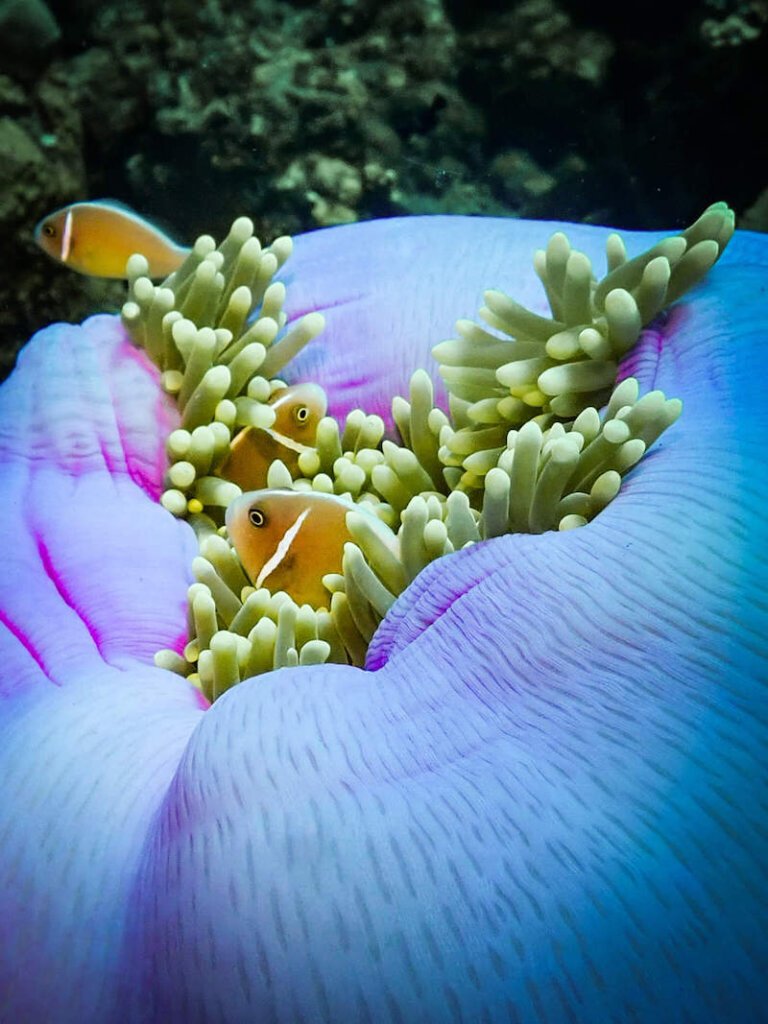

We also spotted some unique juveniles fish, like the juvenile emperor angelfish and a first for me, the juvenile harlequin sweetlips, which had such a unique pattern.
I love to see juvenile fish because they’re usually so different than what you end up seeing later on. Fish life stages are so interesting!

Aside from that, we saw some of the common Bali nudibranchs (the ‘bus stop’ nudibranch, etc.) and also a really cool peacock-tail anemone shrimp!
It was really hard to photograph because the fringes of the anemone were, well, doing its job of obscuring the shrimp.
Still, it was cool to watch and try to photograph, though it was a reminder of how far I have to go as an underwater photographer!
Melasti
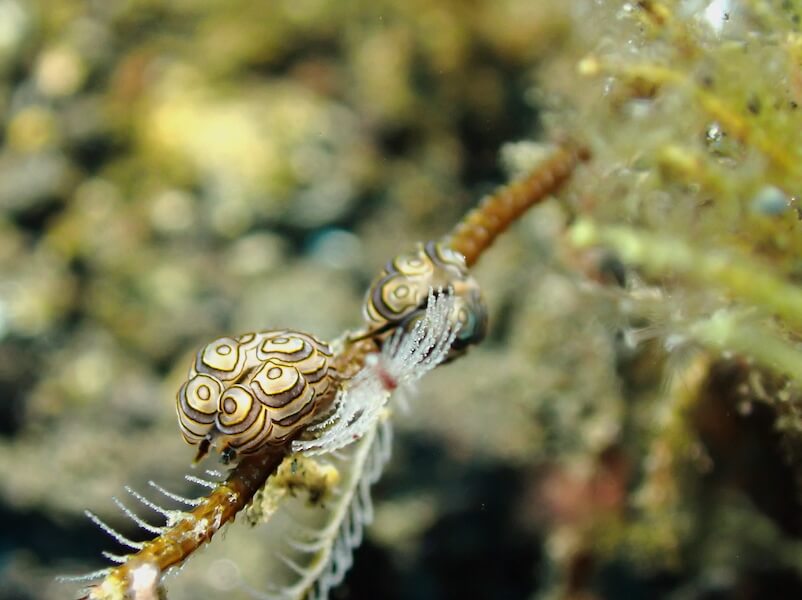
Dive Type: Shore dive for muck diving and macro photography
Dive Level: Beginner, but only really exciting for underwater photographers
Dive Profile: Maximum depth meters, average depth meters, dive time minutes
Dive Sightings: Thornback cowfish, Hypselodoris confetti nudi, Doto greenamyeri nudi, emperor shrimp with Mexichromis nudis, Eubranchus sp. nudi, Eubranchus virginalis nudi, thumbprint toby, Flabellina rubrolineata nudi, ‘Shaun the Sheep’ Costasiella kuroshimae nudi, Goniobranchus hintuanensis nudi, leopard flounder, Eubranchus ocellatus nudi
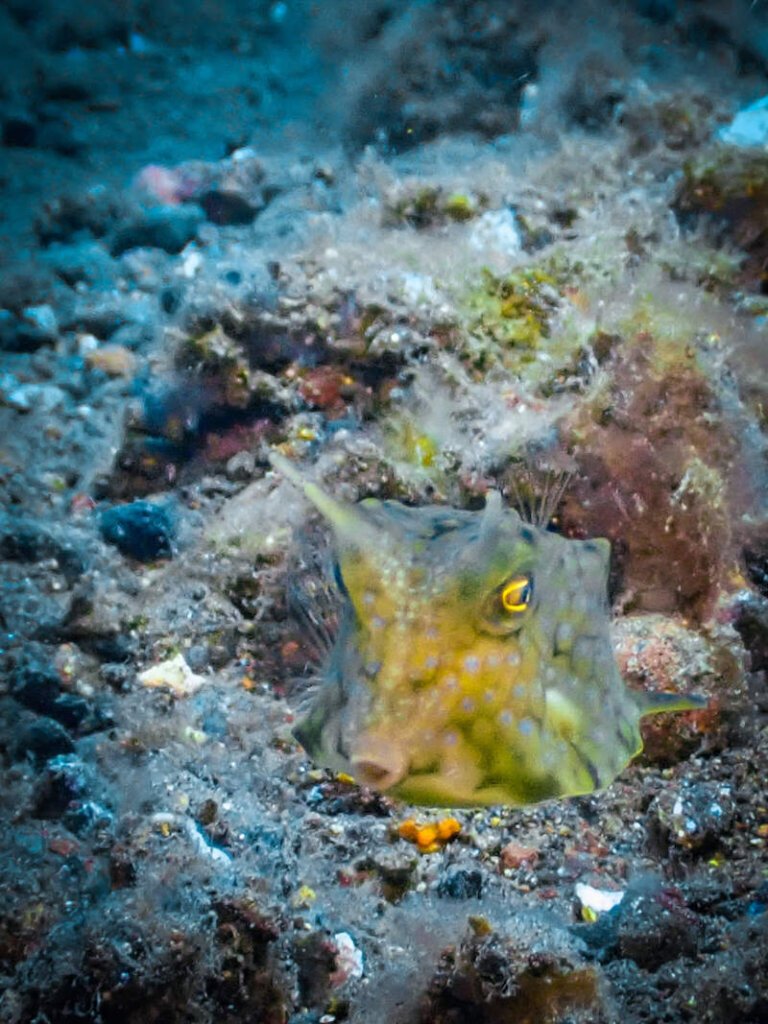
I hadn’t heard of this dive site before my dive guide talked about it, but I was surprised that this was maybe my favorite dive site in all of Tulamben!
This is definitely a true muck dive. Don’t expect a lot of coral at all — it’s mostly little bits and pieces of coral here and there, with lots of sand and hydroids to inspect in search of macro photography opportunities.
There are a few fish here and there, but it’s mostly gobies, tobies, and boxfishes — other than that, the focus is on nudibranchs, and boy, was this a nudibranch party!

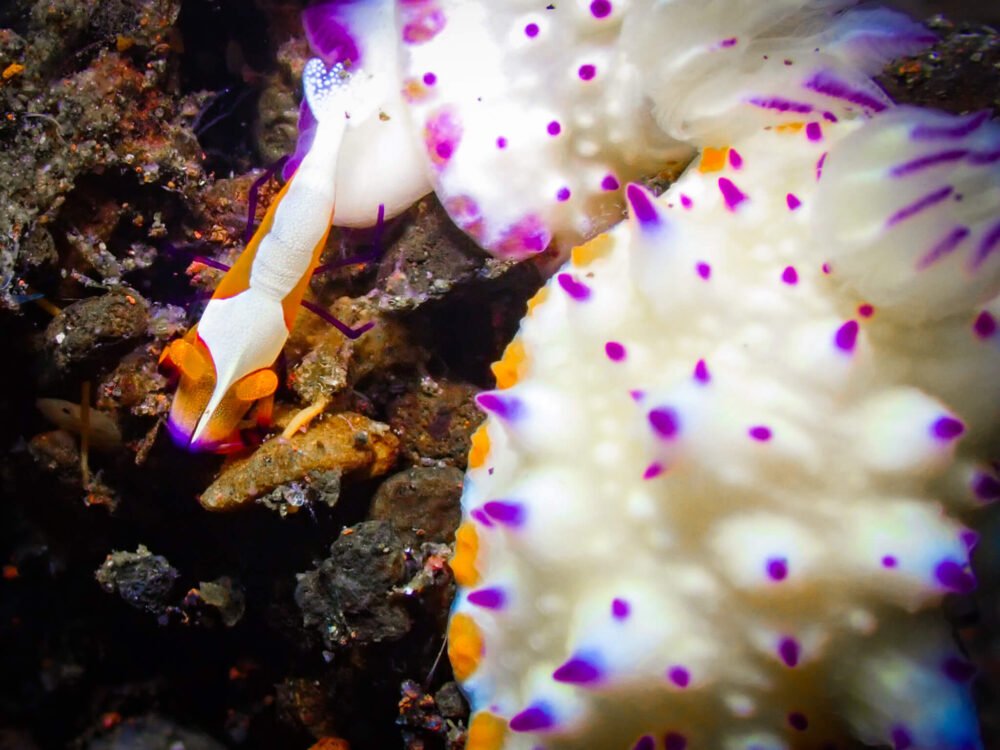
For some reason, this particular dive site is hugely popular with the Mexichromus genus of nudibranchs… I truly lost count of how many I saw, but it was definitely around 10 in a single dive.
There were probably a few different species of Mexichromus but I’m not too familiar with this genus so I’m not quite able to parse out all the differences.
This was also where we saw perhaps one of the most famous nudibranchs of all: the ‘Shaun the Sheep’ nudibranch, aka the Costasiella kuroshimae.
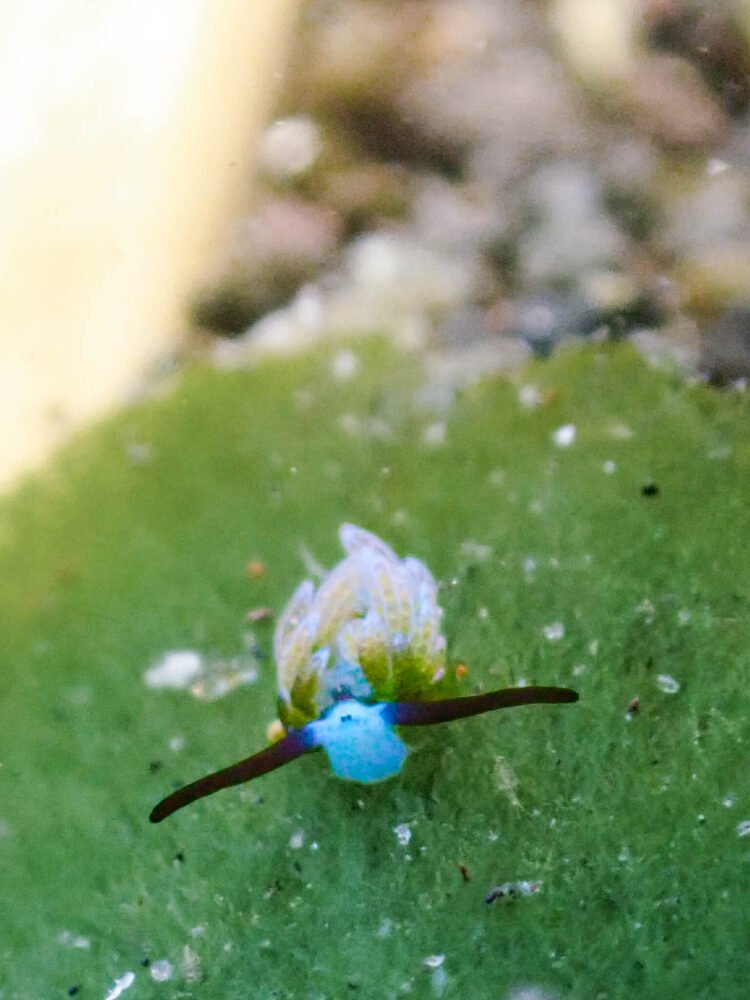
My photo of it isn’t as good as it could be, as I hadn’t learned how to fully zoom (this is it 11x, but I just learned my Olympus TG6 can actually go up to 44x!)
These guys are so tiny, they’re really difficult to picture — but this photo is already so much better than my last attempt, so I’m still happy with it.
We also saw some other really otherworldly nudibranchs here that I had never seen before or even heard of.
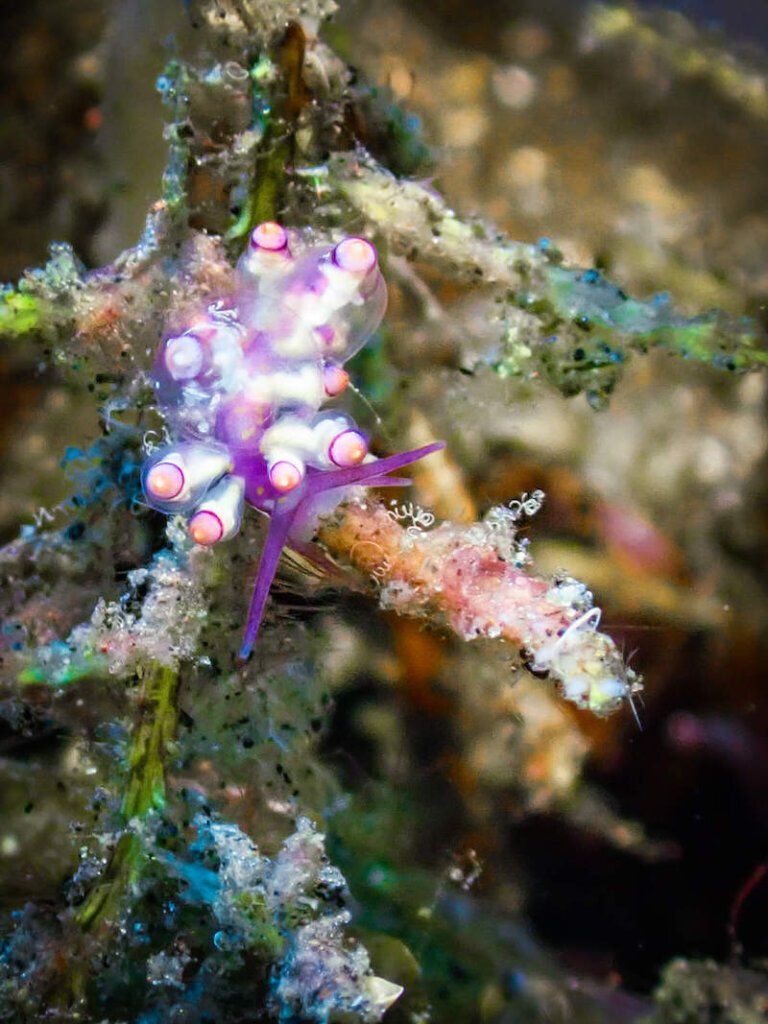
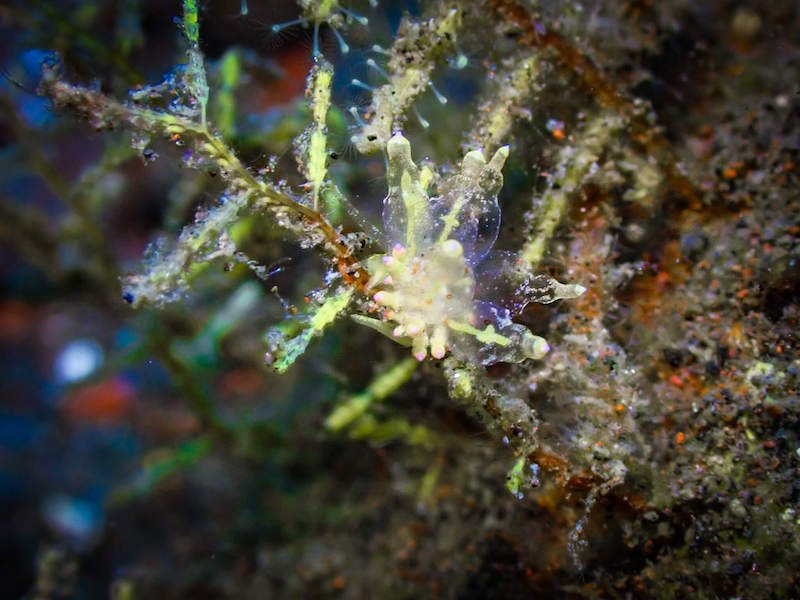
For me, one of my favorite things about a dive is if I leave the water being like “what the hell did I just see”, excited to tear into a marine life ID book.
But maybe that’s just me: I’m a big nerd and information sponge for all things diving, so this was a really fun dive for me and a highlight in Tulamben.
Seraya Secrets
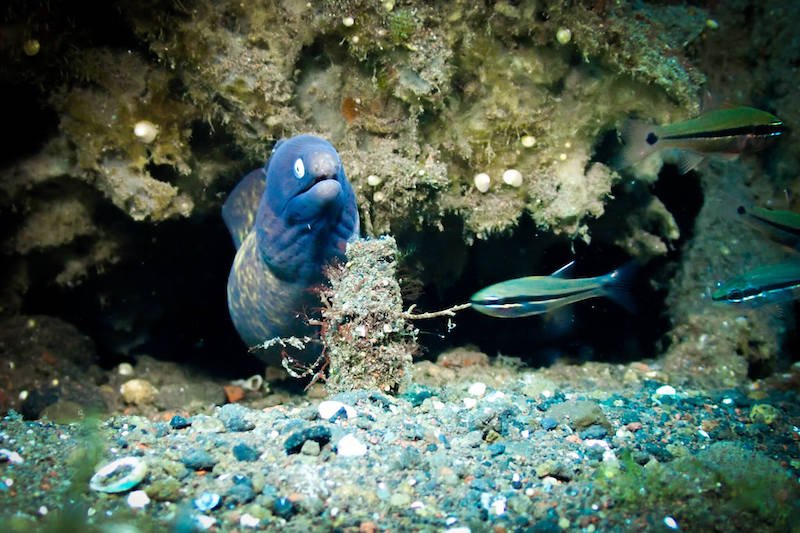
Dive Type: Shore dive for muck diving and macro photography
Dive Level: Beginner, but only really exciting for underwater photographers
Dive Profile: Maximum depth meters, average depth meters, dive time minutes
Dive Sightings: Spectacled filefish, harlequin shrimp, juvenile peacock razorfish, decorator crab, white-eyed moray, long nose rock shrimp (aka ‘Donald Duck shrimp’), ornate ghost pipefish, black saddled toby, Mexichromus katalexis nudi, Hypselodoris maculosa nudi, Hypselodoris tryoni nudi, Bennett’s toby
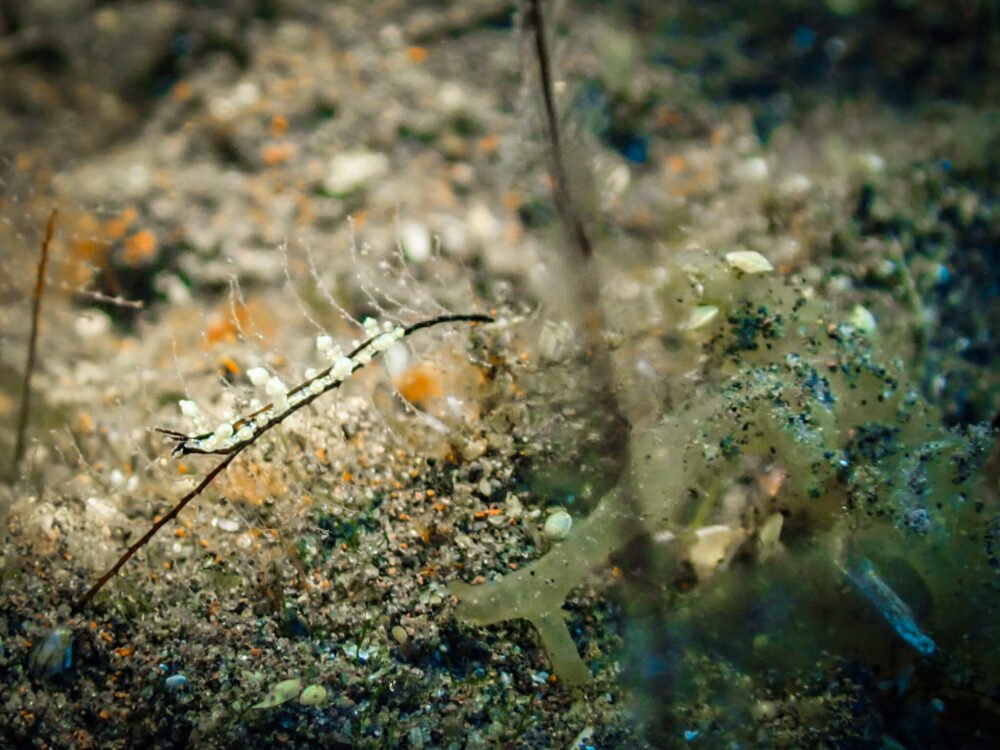
This was ‘the big dive site’ I had heard about for muck diving in Tulamben and I wasn’t disappointed!
Though I think I liked Melasti better by a hair, I still saw so many cool things on this dive.
This one was full of lots of little critters that were really interesting: not necessarily all nudibranchs, but other funny-looking creatures like the long nose rock shrimp and harlequin shrimp made an appearance!
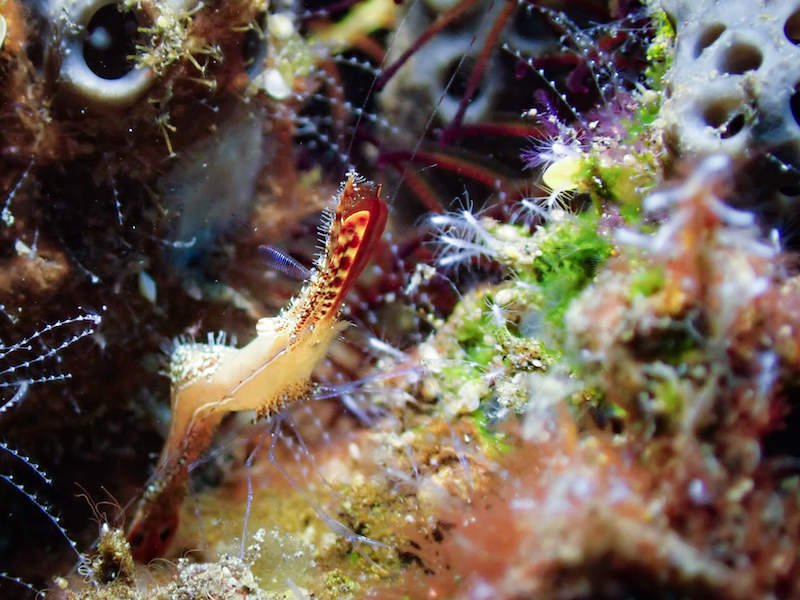
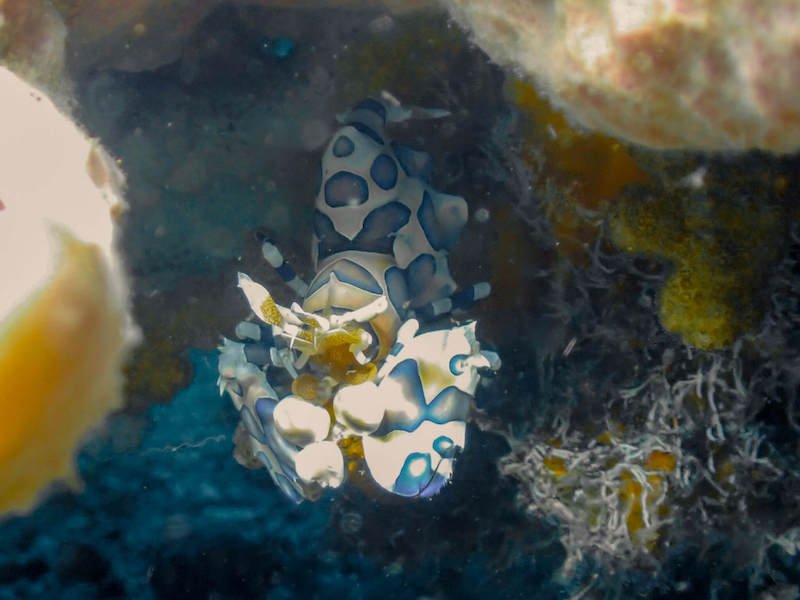
In terms of fish, we spotted a ornate ghost pipefish (another favorite subject to shoot, especially since they don’t move that fast) and a spectacled filefish, a funny-looking creature.
We also saw a unique juvenile peacock razorfish, which was a unique sighting — I really liked its ‘hook’-like head feature.
Lastly, we saw a few of the “usual suspects” in terms of nudibranchs: a Mexichromus katalexis, two Hypselodoris maculosa, and Hypselodoris tryoni nudi
More Dive Sites in Tulamben
Here are some other dive sites in Tulamben that I haven’t gotten the chance to experience… yet!
They’re on my list for future dives, though. I can’t stay away from Bali!
- Kubu Wreck
- Boga Wreck
- Batu Belah
- Batu Niti
- Cantik
- Sidem
- Batu Ringgit
Allison Green is a former educator turned travel blogger. She holds a Masters in Teaching and a B.A. in English and Creative Writing. Her blog posts merge her educational background and her experience traveling to 70+ countries to encourage responsible, enriching travel. She has been a speaker at the World Travel Writers Conference and her writing, photography, and podcasting work has appeared in National Geographic, CNN Arabic, CBC Canada, and Forbes, amongst others. Now a full-time traveler, she has lived in Prague, Sofia, New York City, and the San Francisco Bay Area.
[ad_2]
